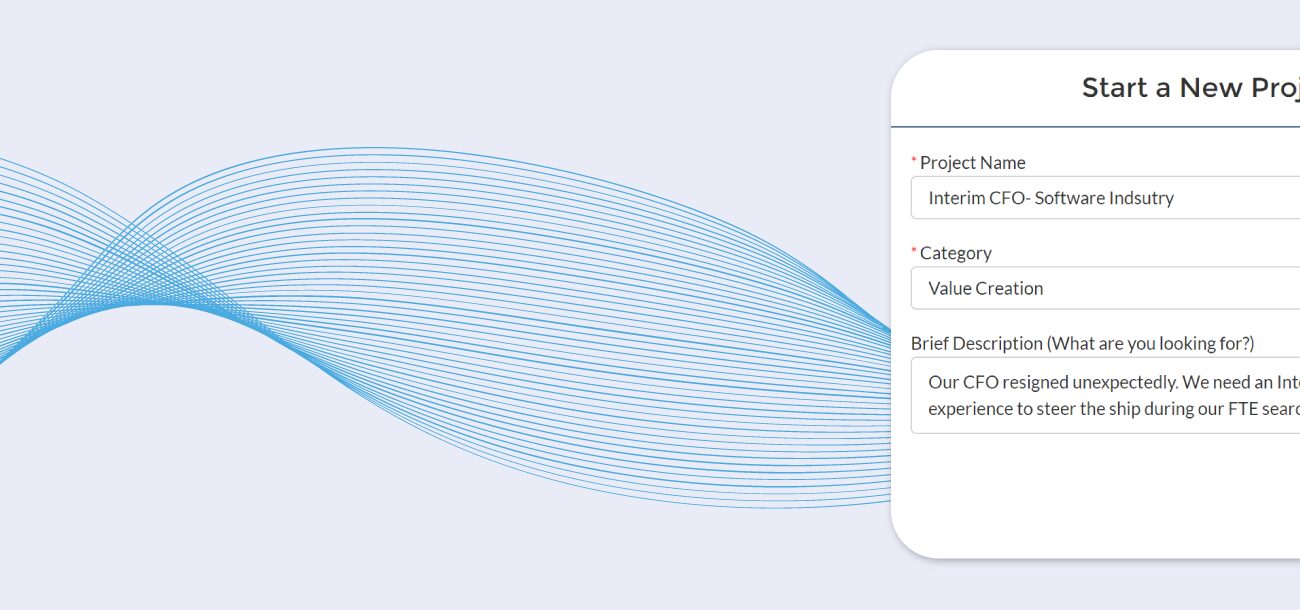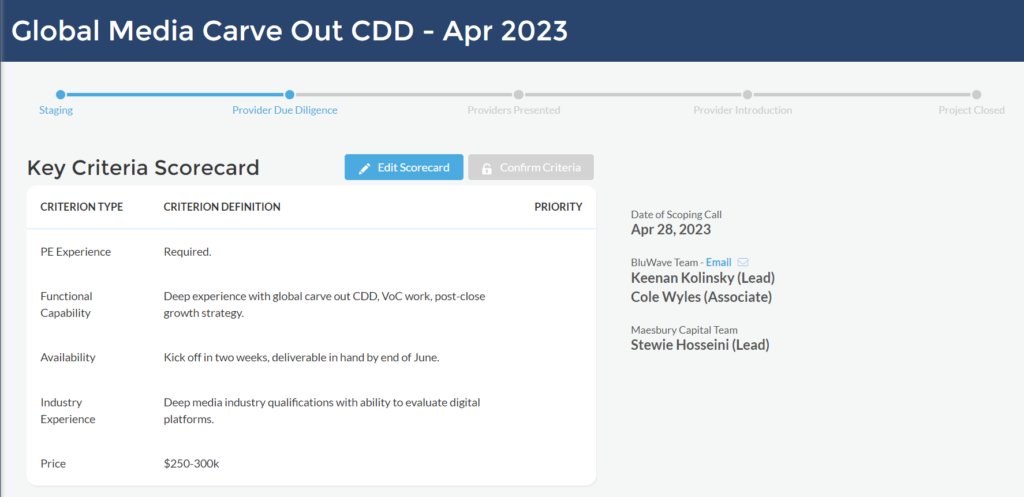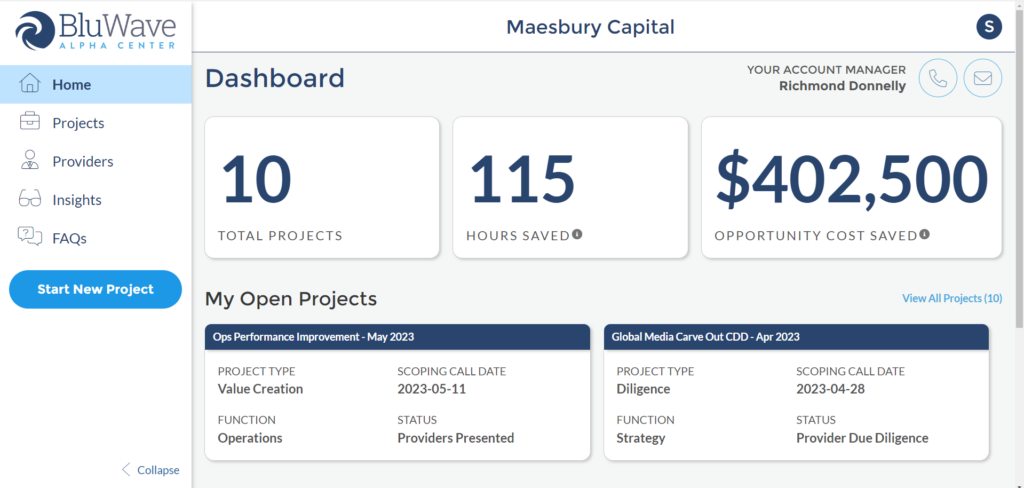BluWave welcomed a group of accomplished thought leaders June 22 for its latest VP forum.
The panel, comprised of Lauren D’Amore of Prelude Growth Partners, Mackenzie Laudel of Shamrock Capital Advisors and Yan Levinski of Trivest Partners was moderated by BluWave founder & CEO, Sean Mooney.
The experts delved into three critical aspects of the investment landscape: effective sector ideation strategy, bridging the buyer-seller valuation gaps and leveraging AI in the investment process.
Here are some of the key takeaways:

Summary Takeaways
- Investment firms increasingly employ long-term thematic exploration for ideation, aiding their decision-making process and enabling differentiation.
- The dynamic market environment necessitates innovative approaches like earn-outs to bridge buyer-seller valuation disparities.
- AI is still nascent in the investment arena, with its integration and application varying greatly across firms based on their unique sectoral needs and strategic requirements.
This event was conducted with the Chatham House Rule in place.
Expanding on Sector Ideation Strategy
The panelists stressed the importance of leveraging industry, consumer and market trends to formulate effective investment strategies. To this end, firms are differentiating themselves by immersing in a particular theme or sector over multiple years. This not only lends a unique perspective to every investment opportunity but also leads to more informed and strategic decision-making.
The panel also touched upon the importance of a focused investment universe. Some firms are moving away from a broad-spectrum approach to concentrate on mid-market, founder or family-owned businesses. This narrower focus facilitates a deep understanding of potential investments and leads to higher quality deal flow.
CASE STUDY: How BluWave Enabled Massive Turnaround of Family-Owned Business
Bridging the Buyer/Seller Gap
As the market continues to fluctuate, there’s been a shift in deal flow, with some firms noticing a lean toward growth equity deals. These deals offer more structural levers to pull during negotiations, proving to be advantageous in the current economic climate.
READ MORE: PE Market Analysis: Growth Strategy for Business
In response to sellers’ high expectations, firms have had to adapt and innovate their negotiation strategies. Earn-outs, previously less favored due to their potential complexity, are now being used more frequently to bridge valuation gaps. Firms are also exploring other attractive deal structures, such as rollovers and seeking to simplify negotiations by taking representations and warranties off the table.
Embracing AI in the Investment Process
The conversation on AI’s role in the investment process revealed a mix of approaches. Some firms have proactively set up AI task forces to explore how the technology can impact their portfolio companies and be integrated into daily workstreams.
READ MORE: AI Data Analytics: Business Intelligence Tools
But as mentioned above, the adoption of AI varies across firms. Some admitted to falling behind, expressing a need to engage AI consultants to bridge the knowledge gap. Conversely, others haven’t yet prioritized AI due to their investment in sectors where it has less relevance.
Whether you’re navigating investment strategies, bridging valuation gaps or exploring the potential of AI, the landscape of investing is continually evolving.
As these conversations unfold, BluWave remains committed to connecting you with the exact-fit resources and insights to navigate this ever-changing environment. To learn more, or to start your project, set up a scoping call with our research and operations team.
















